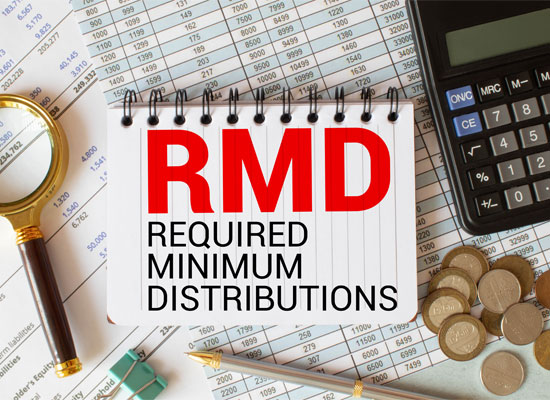 Contact
About Us
Articles
Home
Contact
About Us
Articles
Home

Retirement planning hinges on one critical question: How much can you safely withdraw from your savings without running out of money? According to Morningstar's comprehensive State of Retirement Income report, the recommended safe withdrawal rate has shifted to 3.7% for new retirees using a balanced portfolio with 20-50% in equities. This represents a downward adjustment from the traditional 4% rule, reflecting current economic realities and ensuring a 90% probability of success over a three-decade retirement horizon.
The reduction stems primarily from updated market projections, with equity return expectations dropping to 7.3% (from 7.4% in 2023) and fixed-income yields declining with 10-year Treasury returns now projected at 4.1%. These seemingly small adjustments compound significantly over a 30-year retirement timeline, necessitating a more conservative withdrawal strategy.

Not everyone necessarily needs to plan for a 30-year retirement. For those with shorter time horizons, either due to retiring later or based on health and family longevity factors, Morningstar's research indicates higher sustainable withdrawal rates. Retirees with a 20-year horizon can potentially withdraw 5.1% annually, while those planning for just 15 years might safely withdraw up to 6.7%.
These higher rates for shorter retirements highlight the profound impact of time horizon on sustainable spending. Each five-year reduction in planned retirement duration allows for approximately 1.5% higher annual withdrawals, reinforcing the importance of realistic life expectancy assessments in retirement planning.
The traditional approach of withdrawing a fixed percentage adjusted annually for inflation may be unnecessarily restrictive. Morningstar's analysis shows that flexible spending systems that adapt to market conditions can significantly outperform static approaches, potentially increasing lifetime spending while maintaining portfolio longevity.
The report evaluates four dynamic strategies:

Social Security timing represents one of the most consequential retirement decisions. Morningstar's analysis demonstrates that delaying benefits until age 70 can substantially increase both first-year and lifetime income, though it requires careful planning during the gap years.
In their base case scenario (claiming at full retirement age of 67), retirees achieve approximately $73,000 in first-year income and $2.19 million in lifetime spending. By contrast, delaying until 70 and implementing a bridge strategy increases first-year income to $82,000 and lifetime spending to $2.46 million — a significant enhancement.
However, using portfolio withdrawals to bridge the delay period reduces ending balances by approximately $100,000. Alternative income sources during the delay period, such as part-time work, can preserve portfolio growth while capturing the long-term benefits of delayed Social Security.
Guaranteed income sources can provide retirement security that market-based approaches cannot match. Morningstar evaluated several approaches:
Treasury Inflation-Protected Securities (TIPS) ladders offer inflation-adjusted income with government backing. A pure TIPS strategy allows for a 4.4% withdrawal rate with 100% success probability, though it typically depletes savings by year 30. Combining TIPS with equities (e.g., a 25% equity allocation) preserves legacy potential while still generating substantial first-year income of approximately $69,000.
Immediate annuities with cost-of-living adjustments (COLAs) provide another guaranteed income avenue. Allocating 10% of a portfolio to a 3% COLA annuity increases lifetime spending by approximately $30,000 but reduces ending balances by $230,000 — a trade-off between current income and legacy goals.
Deferred annuities (sometimes called longevity insurance) that begin payments at advanced ages like 85 can provide substantial late-retirement income ($39,600 annually in Morningstar's example) but face erosion from inflation unless inflation protection is purchased.

Morningstar introduces a valuable new metric — the spending/ending ratio — which quantifies the balance between lifetime consumption and legacy goals. This ratio measures what percentage of total resources gets spent during retirement versus what remains for heirs or charitable purposes.
In their base case (claiming Social Security at 67 with traditional withdrawals), the spending/ending ratio is 62/38, meaning 62% of total resources are consumed during retirement while 38% remain at the end. More aggressive strategies shift this balance: implementing guardrails with delayed Social Security creates an 80/20 ratio, heavily favoring consumption over legacy. A pure TIPS ladder results in a 100/0 ratio, maximizing lifetime spending but leaving nothing for heirs.
This framework helps retirees align their withdrawal strategies with their priorities. Those primarily concerned with maximizing lifetime spending might implement dynamic withdrawals like the guardrails method, while those balancing spending and legacy goals might combine guaranteed income sources with growth-oriented investments.
While Morningstar's report focuses primarily on withdrawal rates, tax efficiency represents another crucial dimension of retirement income planning. Strategic withdrawals from different account types (taxable, tax-deferred, and tax-free) can significantly increase after-tax income.
The conventional wisdom suggests depleting taxable accounts first, followed by tax-deferred accounts like traditional IRAs and 401(k)s, and finally tax-free Roth accounts. However, this approach often fails to optimize lifetime tax efficiency. Instead, you may want to consider "tax bracket management" — filling lower tax brackets each year through strategic partial Roth conversions or accelerated IRA withdrawals during lower-income years.
This approach becomes particularly valuable between retirement and age 73, when required minimum distributions begin. Using these years to strategically reduce tax-deferred balances can mitigate future forced withdrawals and associated tax consequences.
Morningstar's State of Retirement Income Report and its downward revision of the safe withdrawal rate to 3.7% reflects changing market conditions.
By carefully considering your retirement time horizon, implementing dynamic withdrawal strategies, optimizing Social Security timing, incorporating guaranteed income sources and balancing spending versus legacy goals, you can create a personalized retirement blueprint that aligns with your specific needs and priorities. The spending/ending ratio provides a valuable metric for evaluating how effectively your plan balances your consumption and legacy objectives.
Additionally, incorporating tax-efficient withdrawal strategies across different account types can further stretch your retirement dollars. Rather than applying a one-size-fits-all approach, today's retirees can benefit from customized planning that integrates these various dimensions of retirement income management. While the traditional 4% rule has served as a useful benchmark, Morningstar's analysis demonstrates that retirement income planning has evolved into a more nuanced discipline requiring personalized strategies and ongoing adjustments.
Alliance America is an insurance and financial services company dedicated to the art of personal financial planning. Our financial professionals can assist you in maximizing your retirement resources and achieving your future goals. We have access to an array of products and services, all focused on helping you enjoy the retirement lifestyle you want and deserve. You can request a no-cost, no-obligation consultation by calling (833) 219-6884 today.


